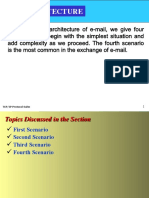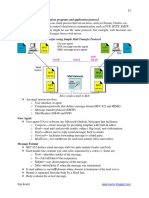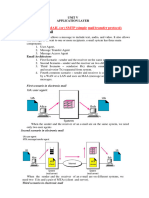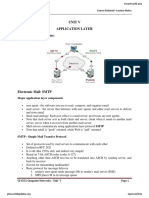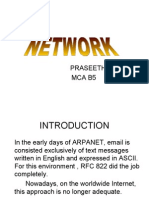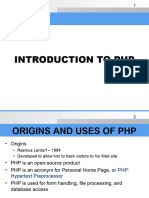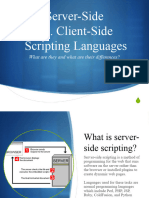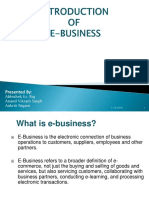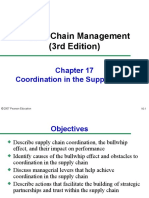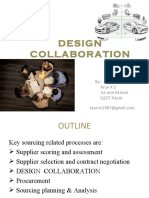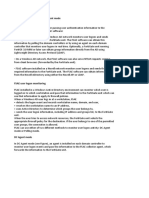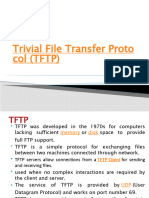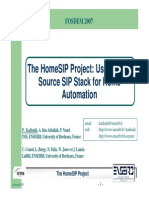0% found this document useful (0 votes)
44 views40 pagesE-Mail: One of The Most Popular Internet Services Is E-Mail
The document describes the components of an email system including user agents, message formats, message transfer agents, and message access agents. It explains how SMTP is used to transfer messages between mail servers and how POP3 and IMAP are used to retrieve messages from a server.
Uploaded by
JayaprasannaCopyright
© © All Rights Reserved
We take content rights seriously. If you suspect this is your content, claim it here.
Available Formats
Download as PPT, PDF, TXT or read online on Scribd
0% found this document useful (0 votes)
44 views40 pagesE-Mail: One of The Most Popular Internet Services Is E-Mail
The document describes the components of an email system including user agents, message formats, message transfer agents, and message access agents. It explains how SMTP is used to transfer messages between mail servers and how POP3 and IMAP are used to retrieve messages from a server.
Uploaded by
JayaprasannaCopyright
© © All Rights Reserved
We take content rights seriously. If you suspect this is your content, claim it here.
Available Formats
Download as PPT, PDF, TXT or read online on Scribd
/ 40











